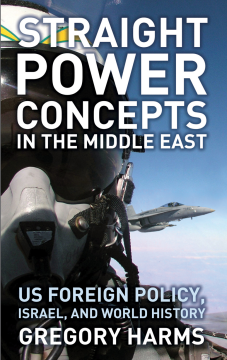
Additional Information
Book Details
Abstract
How did the US become a world power? How did it become involved in the Middle East? What is the history and nature of its 'special relationship' with Israel?
Given the increase in tensions in the Middle East, and the United States' involvement in them, news coverage is in abundance. Yet, the reportage and discussion of American foreign policy is often narrow in scope, offering little background or context. And yet, the historical record sharply contrasts with reportage. Guiding the reader through a panoramic sweep of world and American history, we see how the US became a world power, how the Middle East became 'modern' and how Israel became an American 'strategic asset.' Disavowing the rhetoric commonly used by heads of state, press secretaries, news media, and commentators, we see how recent turmoil is closer to business-as-usual.
'A clear-headed book on empire, because it describes fluently why the responsibility for dealing with rapacious power cannot simply be blamed on history but rests with us right now'
John Pilger
'Lucid insights to readers seeking to understand why America's approach to the Middle East has produced such terrible results. Sharp, persuasive, and based on a clear reading of history, it helps us re-imagine the world's most volatile region'
Stephen Kinzer, author of Overthrow
Table of Contents
| Section Title | Page | Action | Price |
|---|---|---|---|
| COVER | Cover | ||
| CONTENTS | v | ||
| ACKNOWLEDGMENTS | vii | ||
| PREFACE | xi | ||
| PART 1: HISTORY AND CONTEXT | 1 | ||
| 1 - FROM EMPIRE TONATION-STATE: THE GENESIS OF MODERNITY’S 500 YEARS | 3 | ||
| THE WORLD-SYSTEMS FRAMEWORK | 3 | ||
| LAND WORLD-EMPIRES | 7 | ||
| ANCIENT ROME: REPUBLIC, EMPIRE | 11 | ||
| WESTERN EUROPE AND THE MODERN INTERSTATE SYSTEM | 15 | ||
| 2 - THE RISE OF AMERICAN POWER: FROM COLUMBUS TO THE COLD WAR | 22 | ||
| INDEPENDENCE: “THE PROPER GUARDIANS OF THEPUBLIC WEAL” | 22 | ||
| CONTINENTAL EXPANSION: “OUR PROPER DOMINION” | 27 | ||
| GLOBALIZATION: “A CLEAR PREPONDERANCE OF INTEREST” | 33 | ||
| PART 2: DOMINION AND SUPREMACY | 49 | ||
| 3 - THE MODERN MIDDLE EAST AND ISRAEL: A SUMMARY | 51 | ||
| FROM IMPERIAL TO PERIPHERAL | 51 | ||
| THE MANDATE AND THE ARAB STATES | 56 | ||
| PALESTINE AND THE JEWISH STATE | 62 | ||
| 4 - THE UNITED STATES AND ISRAEL: THE SPECIAL RELATIONSHIP FROM TRUMAN TO REAGAN | 70 | ||
| OIL AND DOMINOES: THE UNITED STATES ENTERS THE MIDDLE EAST | 70 | ||
| THE ORIGIN OF US–ISRAELI RELATIONS, 1947–56 | 77 | ||
| THE FORGING OF THE SPECIAL RELATIONSHIP, 1957–67 | 85 | ||
| CONSOLIDATION: NIXON–KISSINGER, 1969–74 | 95 | ||
| DIPLOMACY, CRISIS, AND CONTINUITY: JIMMY CARTER, 1977–81 | 102 | ||
| FORMALIZATION: RONALD REAGAN, 1981–89 | 107 | ||
| CONCLUSION | 116 | ||
| PART 3: DIPLOMACY AND INFLUENCE | 119 | ||
| 5 - THE PEACE PROCESS: ANATOMY OF AN INJUSTICE | 121 | ||
| PROLOGUE | 122 | ||
| THE 1967 PHASE, 1967–78 | 126 | ||
| INTERLUDE: THE REAGAN YEARS | 134 | ||
| THE MADRID–OSLO PHASE, 1989–2001 | 137 | ||
| CONCLUSION: THE POST-TABA PHASE, 2002–07 | 150 | ||
| 6 - THE ISRAEL LOBBY: ANATOMY OF A CONTROVERSY | 155 | ||
| THE LOBBY | 155 | ||
| THE EARLY DEBATE | 159 | ||
| MEARSHEIMER AND WALT | 163 | ||
| THE CURRENT DEBATE: REACTION TO MEARSHEIMER AND WALT | 167 | ||
| EVALUATION AND CONCLUDING REMARKS | 172 | ||
| CONCLUSION | 179 | ||
| NOTES | 183 | ||
| SELECT BIBLIOGRAPHY | 209 | ||
| INDEX | 217 |
